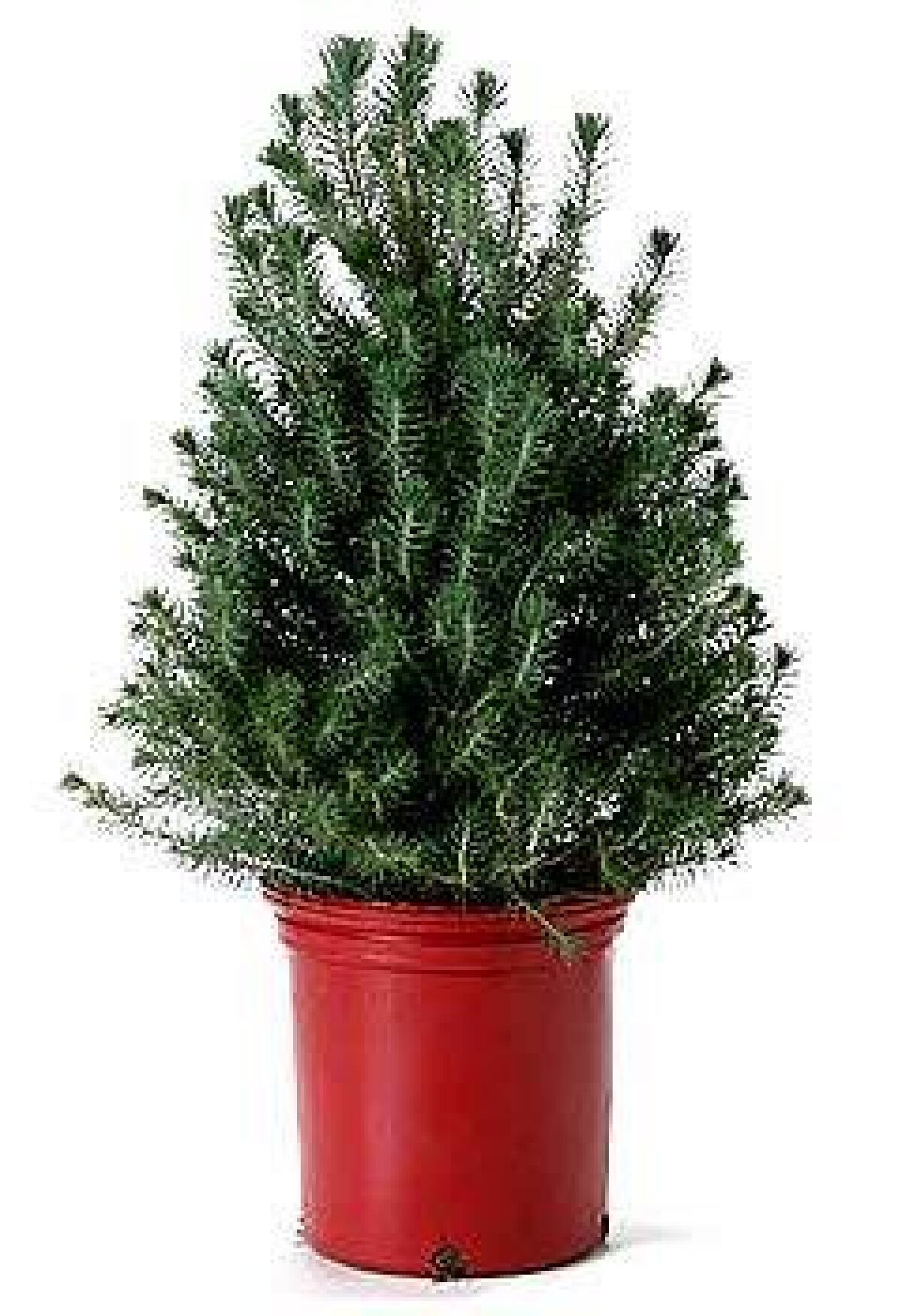Trees you’ll still be enjoying many Christmases from now

- Share via
There is no bad living Christmas tree, just ones that have been planted in the wrong spots. To help readers avoid making 80-foot-tall mistakes, we consulted seasoned horticulturists
for their picks of the best specimen conifers for Southern California gardens.
Cypresses
Arizona cypress (Cupressus arizonica): Known as “rough-bark cypress” in the mountains around Tucson, it can grow from 30 to 70 feet tall and spread to 20 feet. Silvery foliage. Recommended as a quick grower for interior windbreaks. Should not be watered in the summer, when it is dormant.Tecate cypress (Cupressus forbesii): Fast-growing natives from the Santa Ana Mountains “rejoice in interior stations,” wrote naturalist Donald Culross Peattie, where they can withstand winds that “wither the leaves right off citrus and eucalyptus trees.”
Italian cypress (Cupressus sempervirens): The columnar, finely tipped tree of so many Botticellis isn’t originally Italian, but from Iran — perfect for our Mediterranean climate. Water when you plant it and as it becomes established, but then avoid irrigation. Don’t put it against the house, where so many valiant cypresses reach the eaves only to be decapitated.
Monterey cypress (Cupressus macrocarpa): Should only be grown in the coastal fog belt, within sight of the ocean. A hybrid cross of it and Alaskan cedar, Leyland cypress (X Cupressocyparis leylandii), is more adaptable. Requires moderate water and grows so fast it is often at the center of neighbor-vs.-neighbor lawsuits.
Montezuma cypress (Taxodium mucronatum). Cypress in name only; a closer relative of redwoods and sequoias. Native to Guatemala, Mexico and south Texas, this turns into a giant with a vaulting trunk and graceful, weeping boughs. Given moderate water, it can reach 40 feet in 15 years. Growth slows with age.
Cedars
Incense cedar (Calocedrus decurrens): From the mixed pine forests of the Sierra, this intensely fragrant, slow-growing tree is said to have escaped the axes of 19th century loggers because of its allegedly inferior wood. Once established, it can tolerate low rainfall.Deodar cedar (Cedrus deodara): Century-old specimens of the Himalayan native are commonly 80 feet tall and 40 feet wide. When lower branches are pruned, the tree can provide woodland shade and mildly acidified soil perfect for azaleas. Keep the ground well mulched.
Cedar of Lebanon (Cedrus libani): Slow-growing, dramatic tree that can take on tortured but beautiful shapes, and in some varieties grow more horizontally than vertically.
Pines
Gray pine or foothill pine (Pinus sabiniana): Foliage is lacy and gray-green; growing habit is open. It is often mistaken for the Aleppo pine (Pinus halepensis), a Middle Eastern import, and the rugged, slightly less open-formed Afghan pine (Pinus eldarica). All three are tough trees, well suited to our climate. With skillful pruning, the gray and Aleppo can give lovely dappled light, making them good specimens for a woodland garden. Because of the resins, plant away from homes in fire zones.Italian stone pine (Pinus pinea): Ancient race of Mediterranean trees produces the pine nuts used in so many Greek, Italian and Iberian dishes. Pruned into neat cones every year, small specimens are sold as living Christmas trees. Left to grow in California gardens, they reach 40 to 80 feet reasonably quickly.
Torrey pine, also Soledad, lone or Del Mar pine (Pinus torreyana): When these wind-swept and rain-starved trees with gray-green foliage and purple-scaled bark were discovered north of San Diego, they were 15 to 20 feet tall. As they were planted in kinder territories up and down the state, they responded to water and shelter by putting on 4 feet a year. Within a decade, they had turned into 40-foot-tall trees with 30-foot spreads and massive cones. Best planted away from walkways.
An imported pine from a similar climate, Canary Island pine (Pinus canariensis) has a single-column habit and comical, endearing puffs of needles. Narrow, it is jammed in unlikely places, say along parking structures and industrial buildings, to fluff out otherwise hard spaces.
Junipers
Chinese juniper (Juniperus chinensis) is sold in hundreds of varieties, from cypress-like spiral to ground cover. ‘Blue Point Cone’ comes on the market every winter as a Christmas tree and adapts well to western gardens. It is nearly impossible to find the native counterpart, California juniper (Juniperus californica), a 15-foot ornamental shrub that tolerates alkaline garden soils and produces sprays of edible berries essential to wild birds.Recommended: “Conifers of California” by Ronald M. Lanner (Cachuma Press, 1999); Las Pilitas Nursery, 8331 Nelson Way, Escondido, CA 92026; (760) 749-5930, www.laspilitas.com.
More to Read
Sign up for The Wild
We’ll help you find the best places to hike, bike and run, as well as the perfect silent spots for meditation and yoga.
You may occasionally receive promotional content from the Los Angeles Times.






